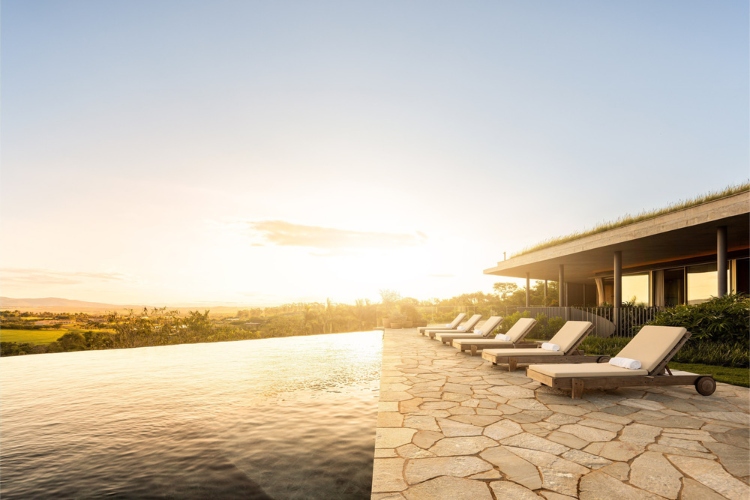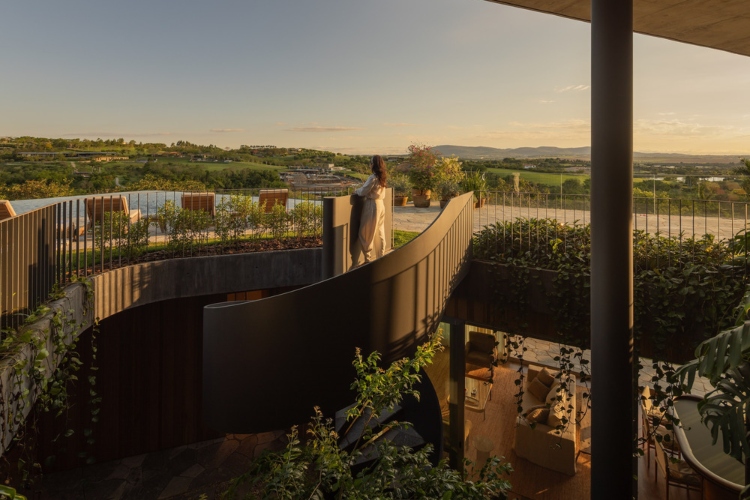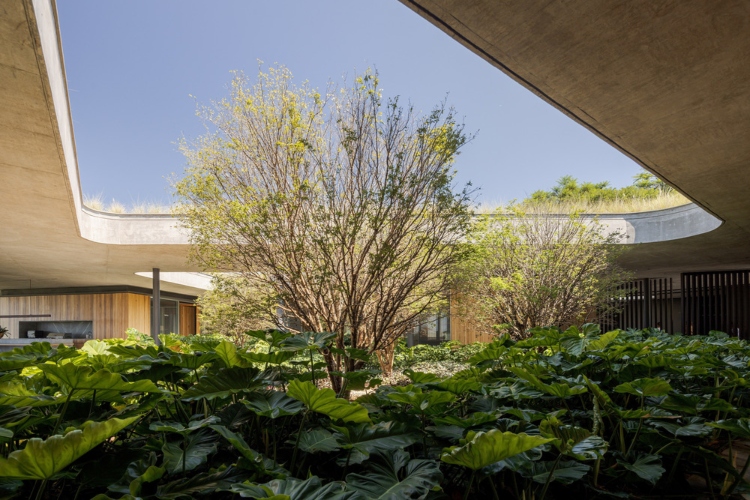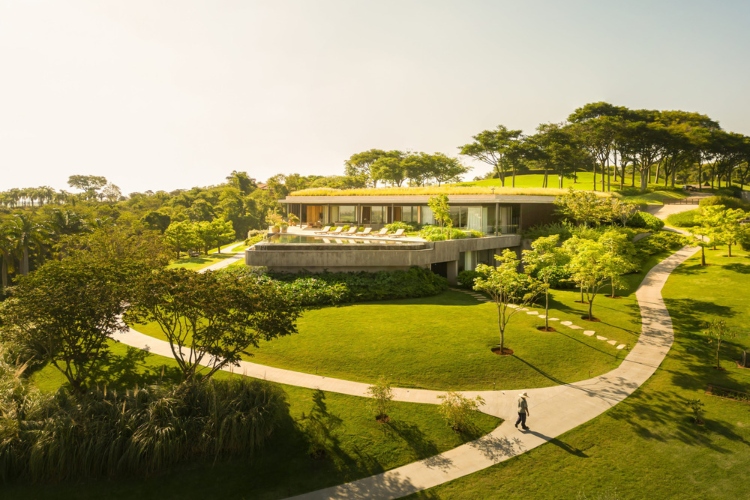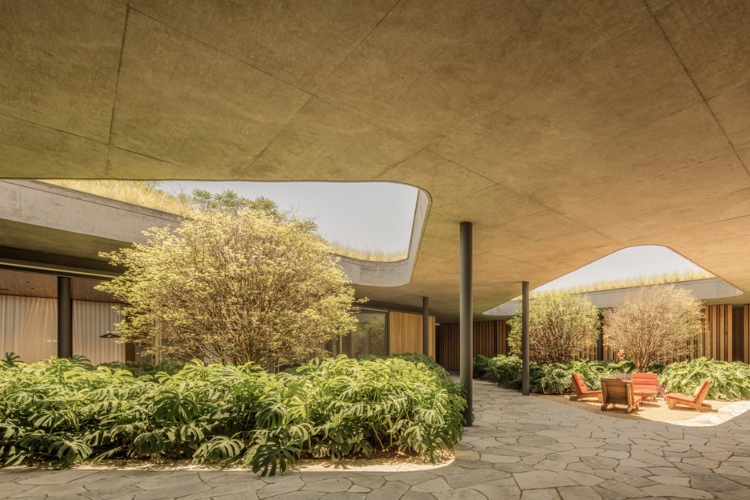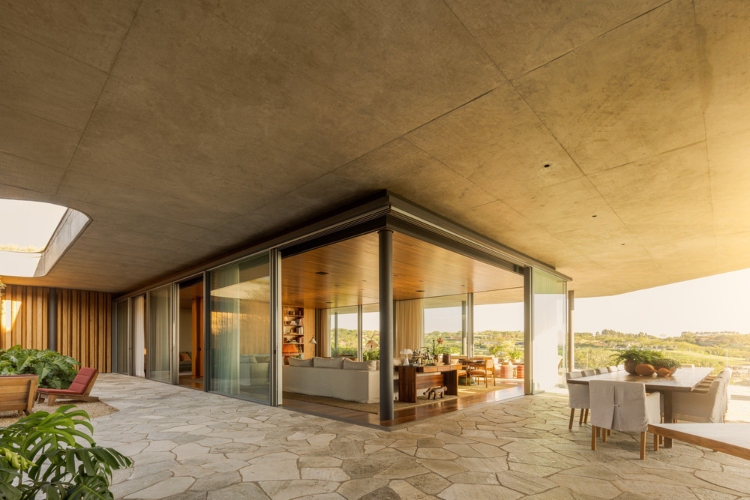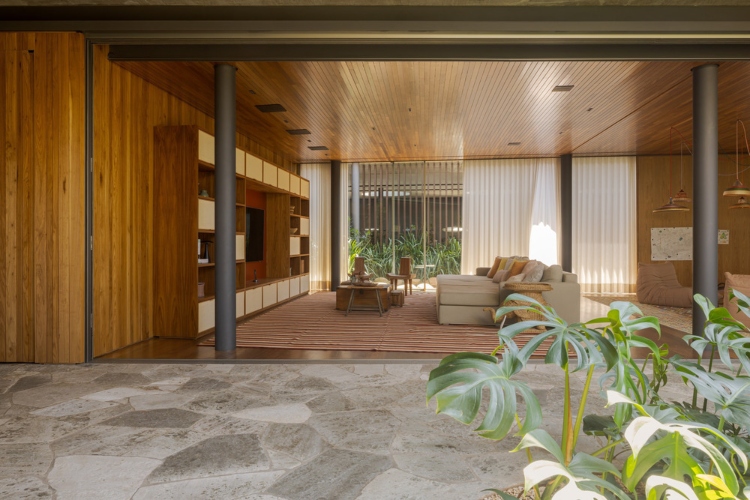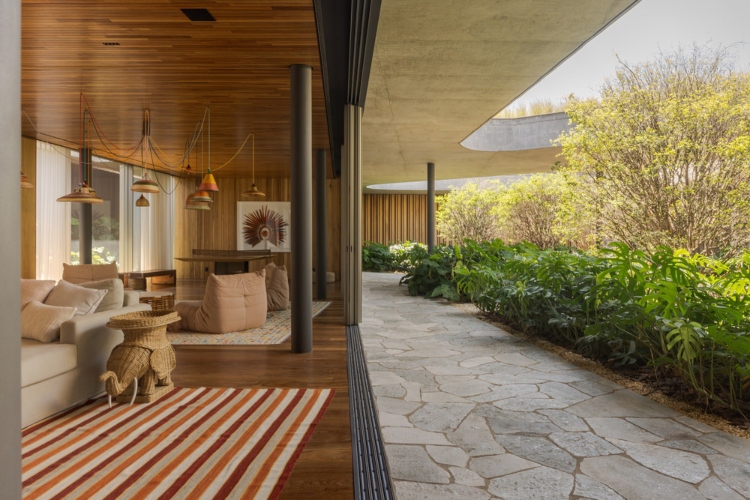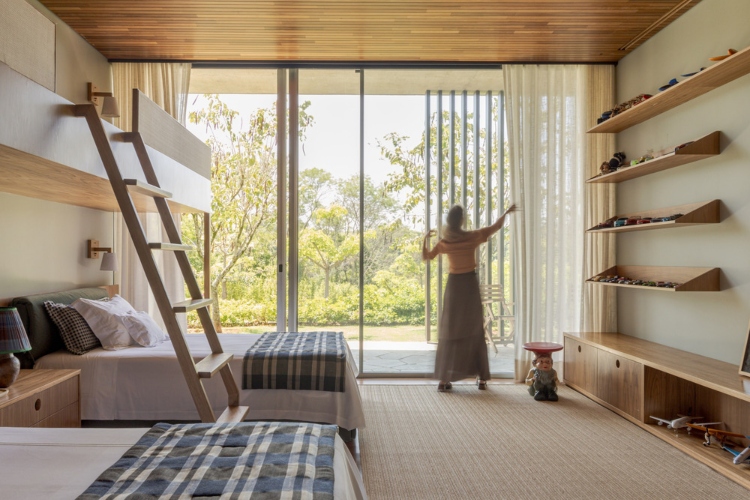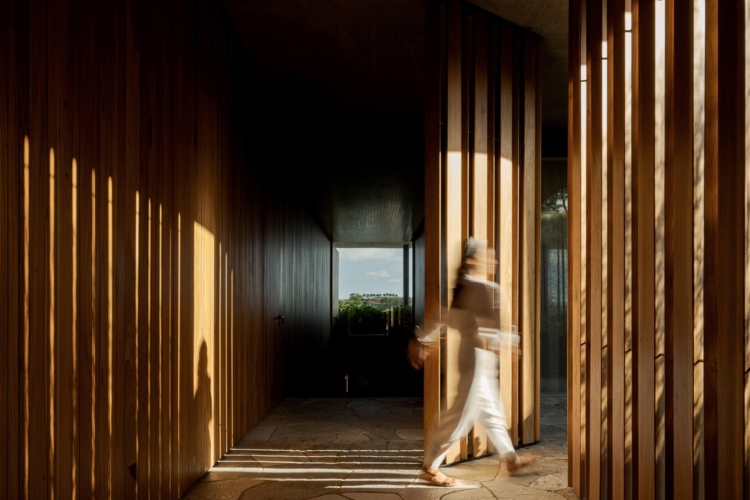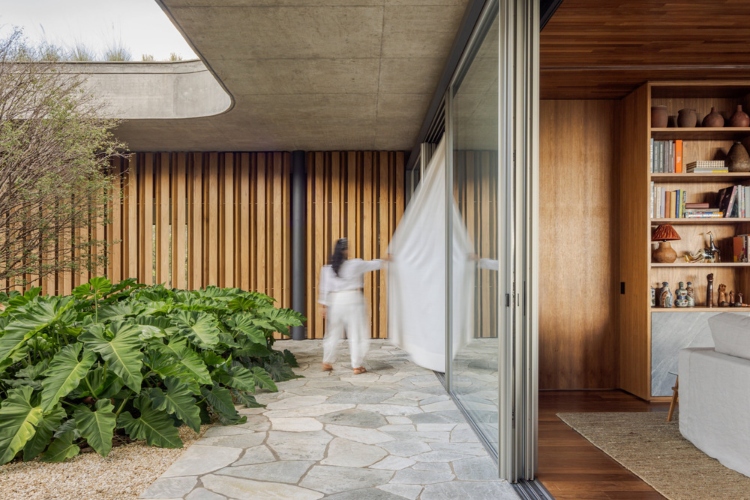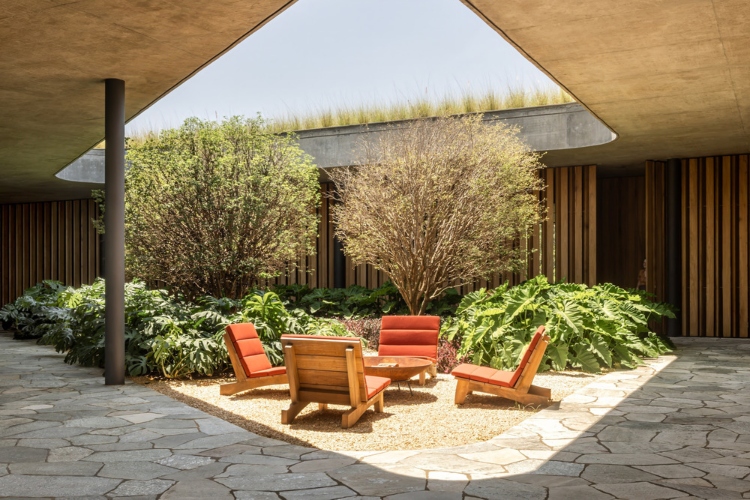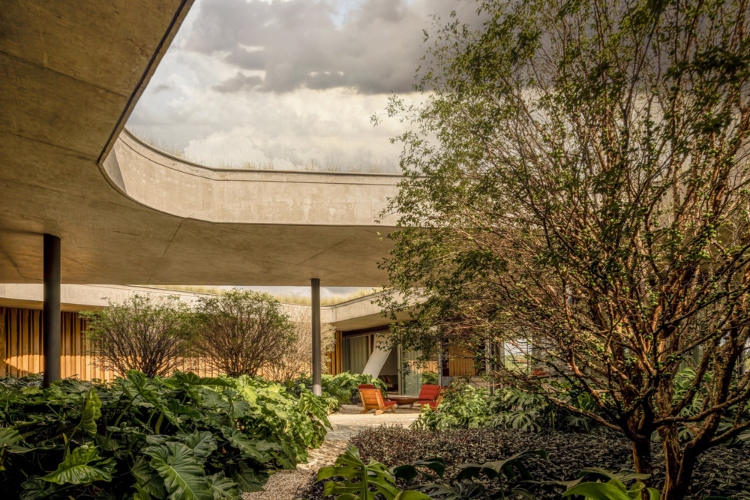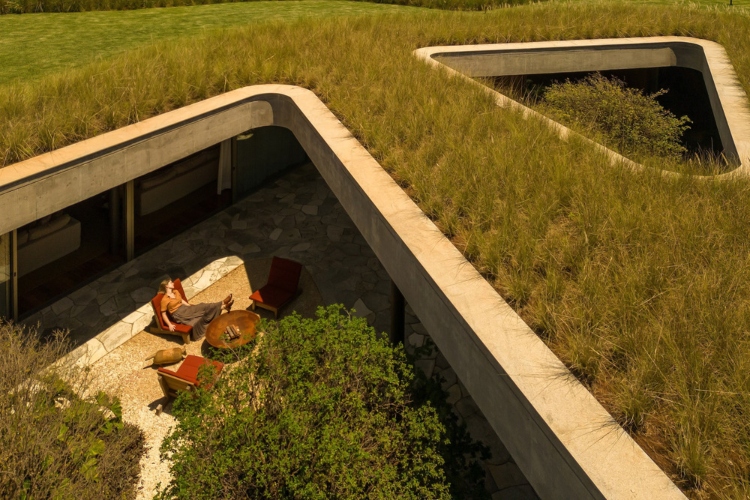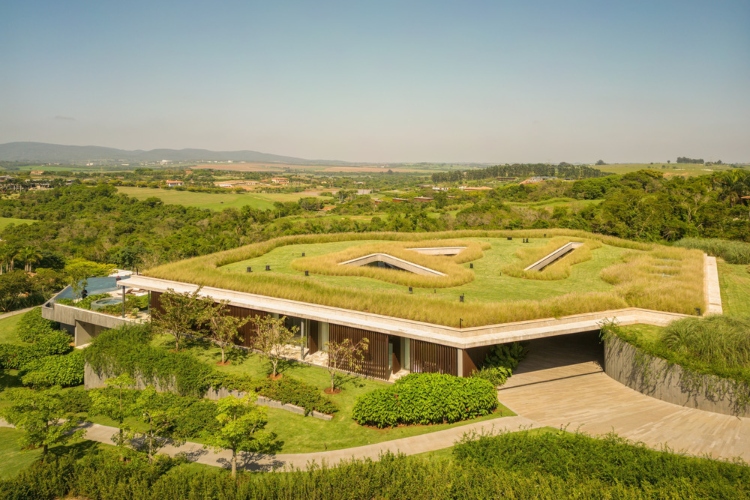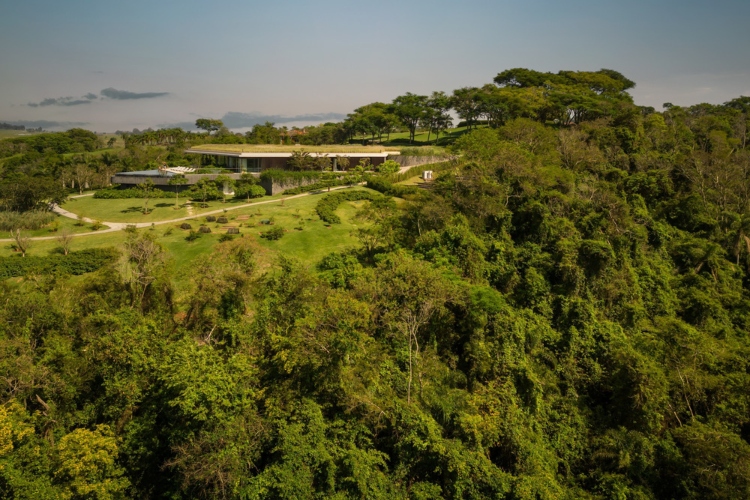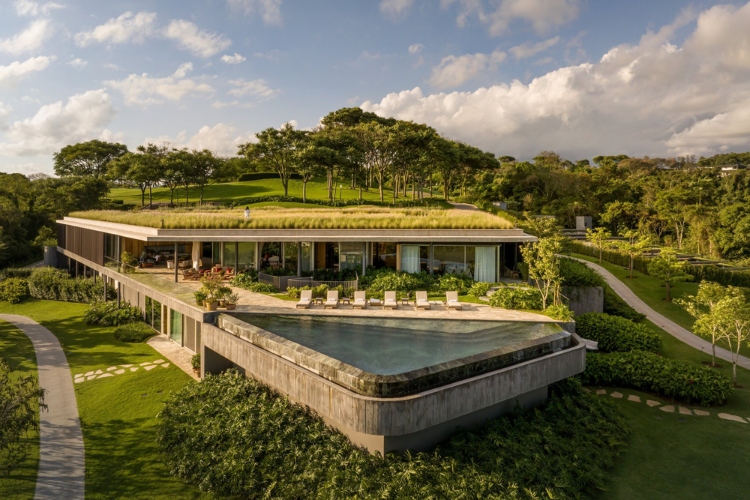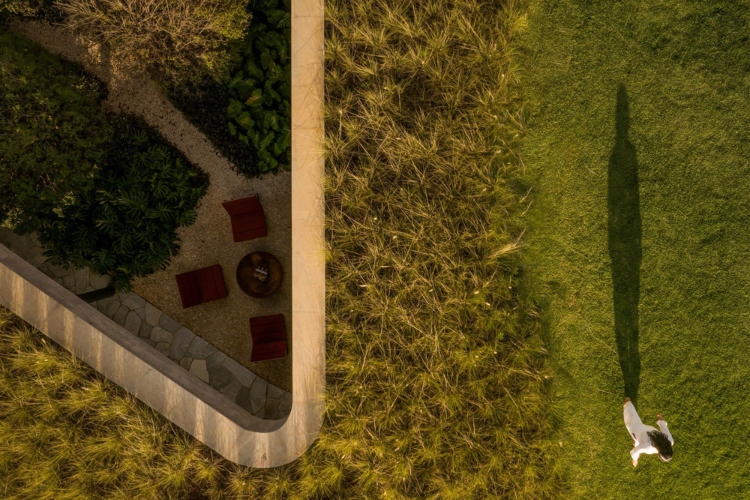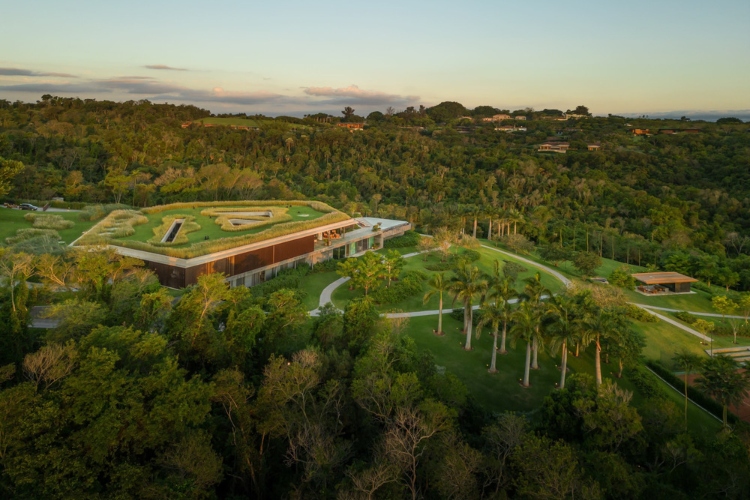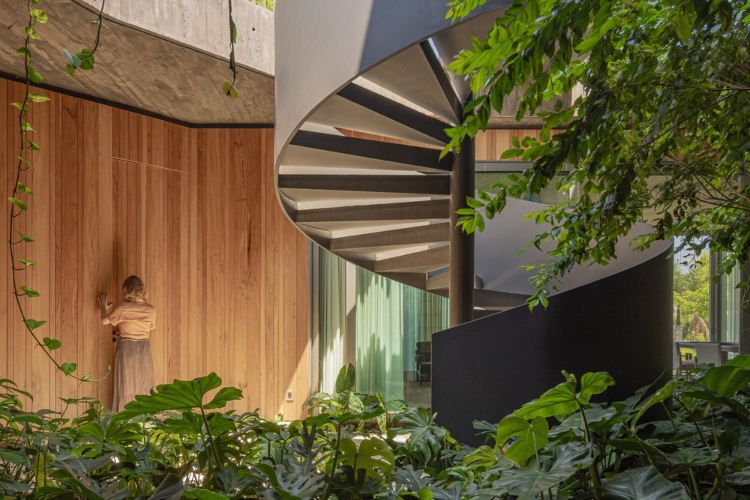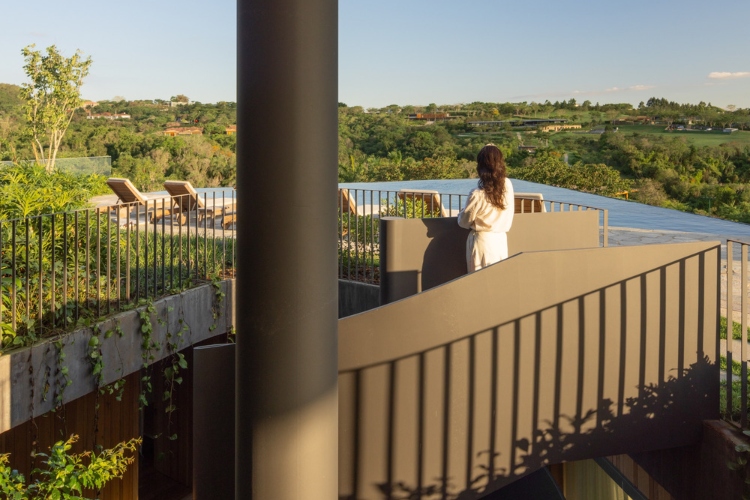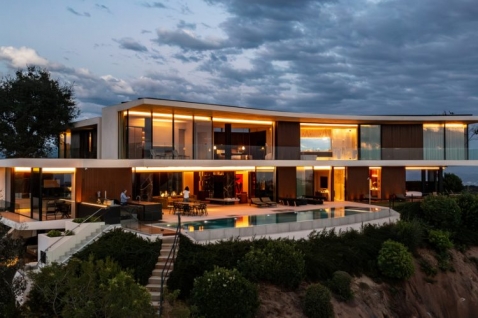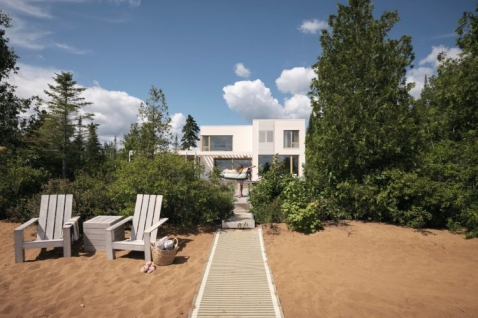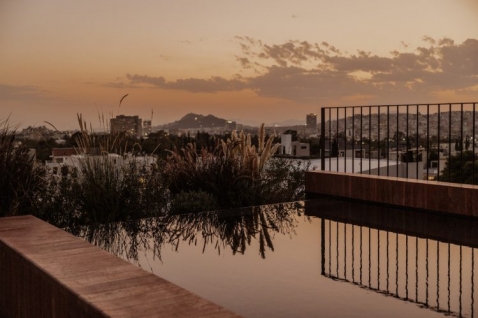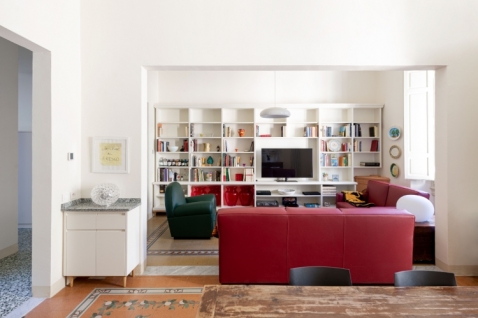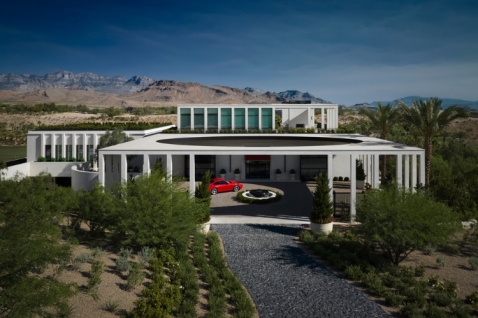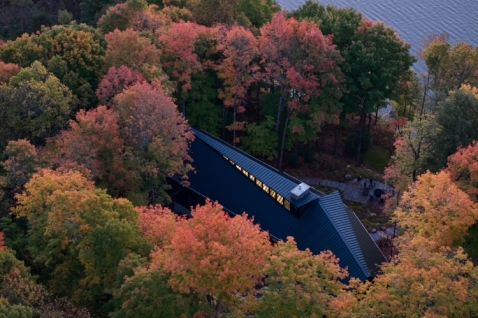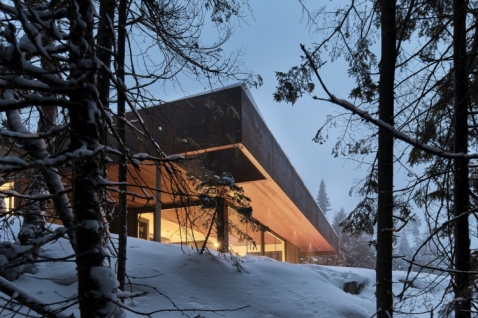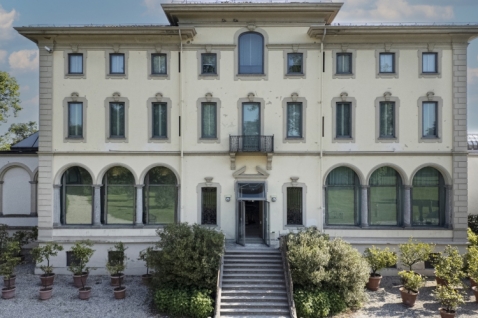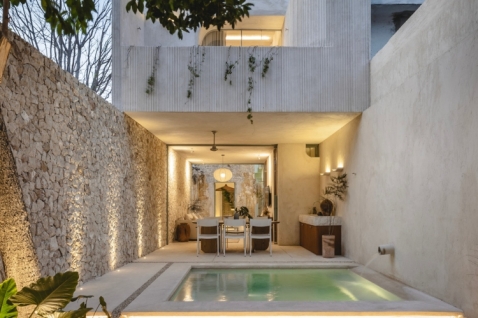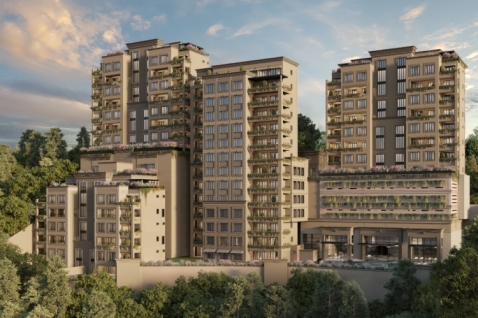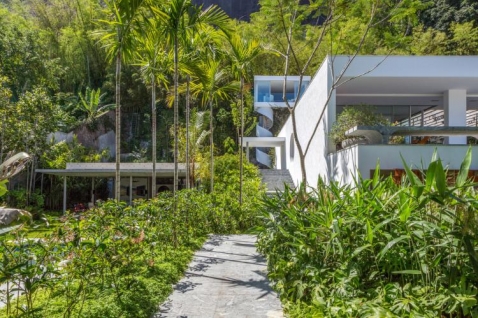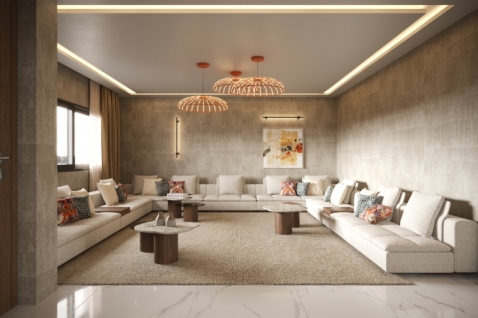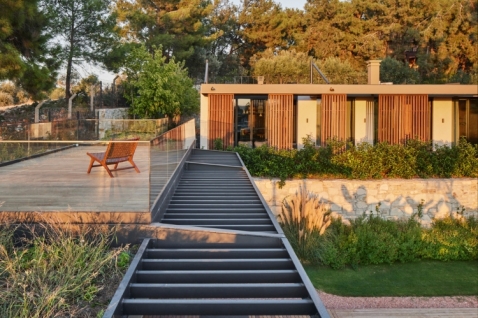More photos
Designed as a gathering and retreat space for a family, this project fulfills the client's desire for a house that merges with the landscape and remains invisible to passersby...
From the first sketch, an intimate connection between the building and its surroundings was evident. The green roof extends from the street, continuing seamlessly with the existing topography of the site. A large balcony rises, offering expansive views over the landscape and connecting the residents with nature. Below it, the architectural program is divided into connected cores, carefully placed around an internal garden, which is the heart of the building.
GAK is a home centered around a courtyard where the main architectural program is distributed in small pavilions. Meeting and relaxation rooms are surrounded by movable glass panels, allowing them to be fully integrated with the garden, creating visual continuity and a shared living experience. The core of the bedrooms is protected by an independent circulation created by vertical wooden elements that separate it from the garden, while balconies open to the external landscape.
To support the large green roof, a mixed structure of concrete and steel was chosen. The presence of vegetation creates a more pleasant microclimate, reducing cooling costs and energy waste. Openings along the pavilions enable natural ventilation, and when the sliding panels are open, the indoor and outdoor spaces are fully integrated. The generous presence of natural light was crucial in the implementation of the project to achieve a balance between wide views of the landscape and thermal comfort. Utilizing this condition, a set of solar panels supplies the electrical system.
In mild contrast to the seriousness of exposed concrete, the presence of wood for floors, ceilings, and furniture, along with warm colors for fabrics and carpets, brings warmth, an organic touch, and softness. Sofas, tables, shelves, and lighting, specially designed for this project by the Bernardes Architecture team, complete the ambiance, along with renowned Brazilian designers such as Carlos Mota, Sérgio Rodrigues, Jean Gillon, and Joaquim Tenreiro.

